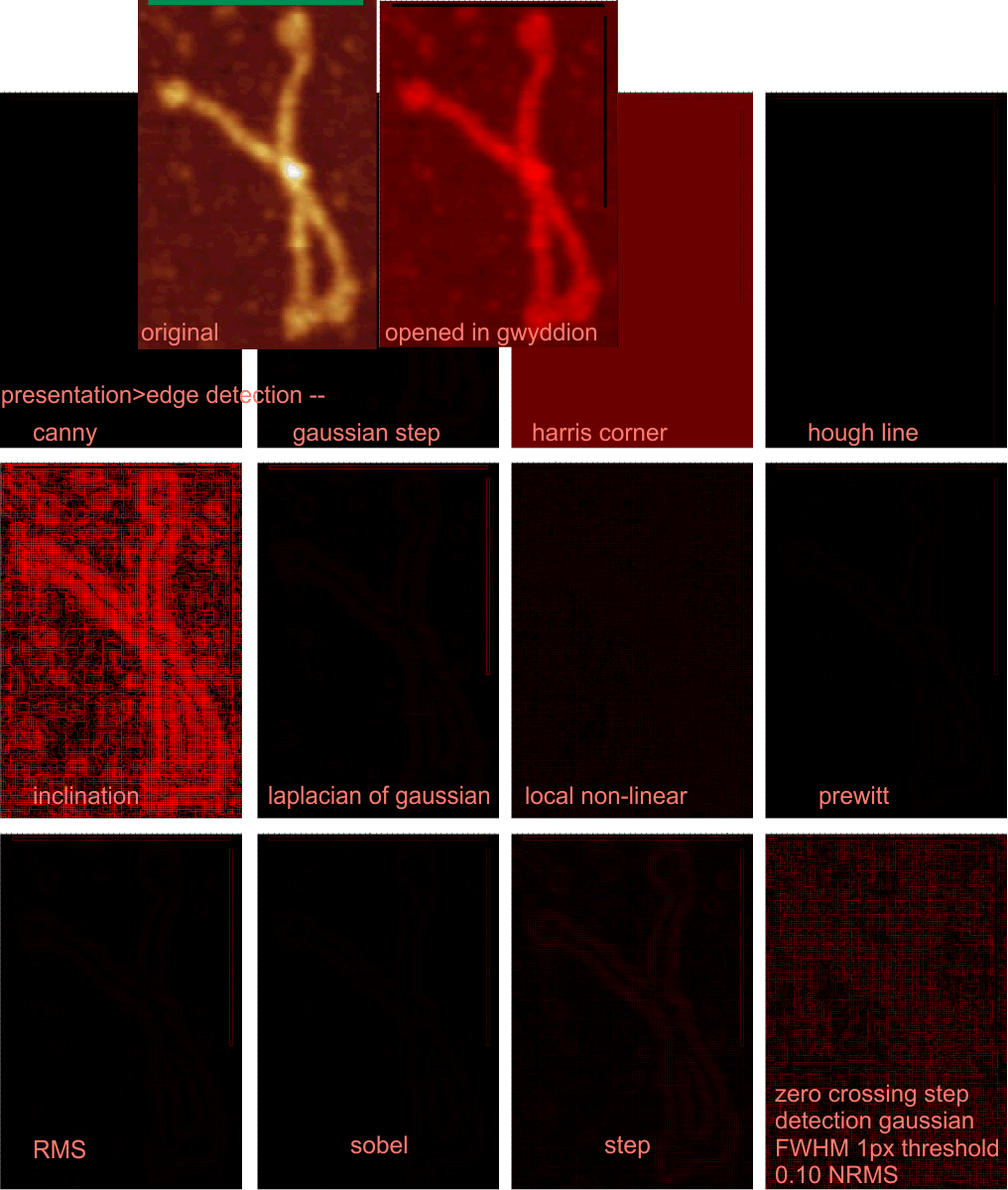I was reading an article on using ImageJ for measurements on microscope images (stereology and morphometry as it was called in the late “dark ages” of the 1970s) which gave a rational for using edge detection (in ImageJ) for refining, for segmenting, for counting (in this case nuclei) objects automatically. While I appreciate the recent nature of that publication, i marveled that I still feel the way I felt in the 1980s that it was far faster and more accurate for me to “look” at the image and manually tick off the nuclei as i counted them using a marker on my micrograph (yep, wet darkroom, printing negatives, and all the efforts that went with it – ha ha). It was of course in the day when computers were slow, programs for processing (i love that word applied to micrographs ha ha) were cumbersome and recording data in a spreadsheet meant hand entering each value.
I purposed then, and still do, that the proliferation of special image processing programs is nice, but not that useful yet, and while i get no feedback, or monetary remuneration for saying the following, in fact I don’t even have an updated version of the software, Photoshop is a wonderful, efficient, easy to use image informatics software. It doesn’t do measuring but image manipulation is super easy, and exporting to numerous formats for measuring is convenient in programs like ImageJ where distance, numbers etc can be obtained.
The sliders for adjusting image processing algorithms are what give the visual input (from each investigator) which is likely better input at this point in AI development, than an algorithm which is applied without user input.
Case in point might be edge detection in Gwyddion, ImageJ, and Photoshop 6 (yep old version and a new version would be much better) shows me that i have to run through every Data processing>Presentation>Edge detection option in Gwyddion, or as Process>find edges in ImageJ, and Stylize>Find edges in photoshop. There are more options in Gwyddion, but few show results that can help determine the peaks or LUT values in AFM images, there is no slider option in ImageJ, nor in Photoshop, so whatever algorithm is in their programs is not modifiable… that said, in ImageJ, it could likely be programmed differently in this open source and editable software. It seems highly unlikely that Photoshop would be so gracious.
Here is a selection of images processed (of original stated above (upper left) and the image imported into gwyddion next to it on the right) and rows of the options for edge detection within gwyddion noted with each outcome. For me, this program for edge detection did not provide information on the structure of the collagen like domain (or any domain in SP-D ). Edge detection in corelPhotoPaint and Photoshop perform differently.
